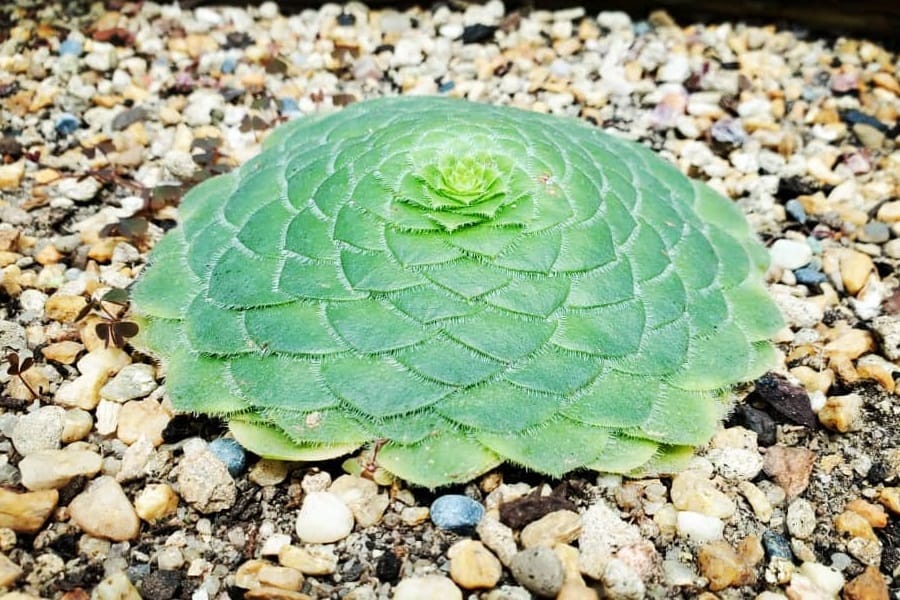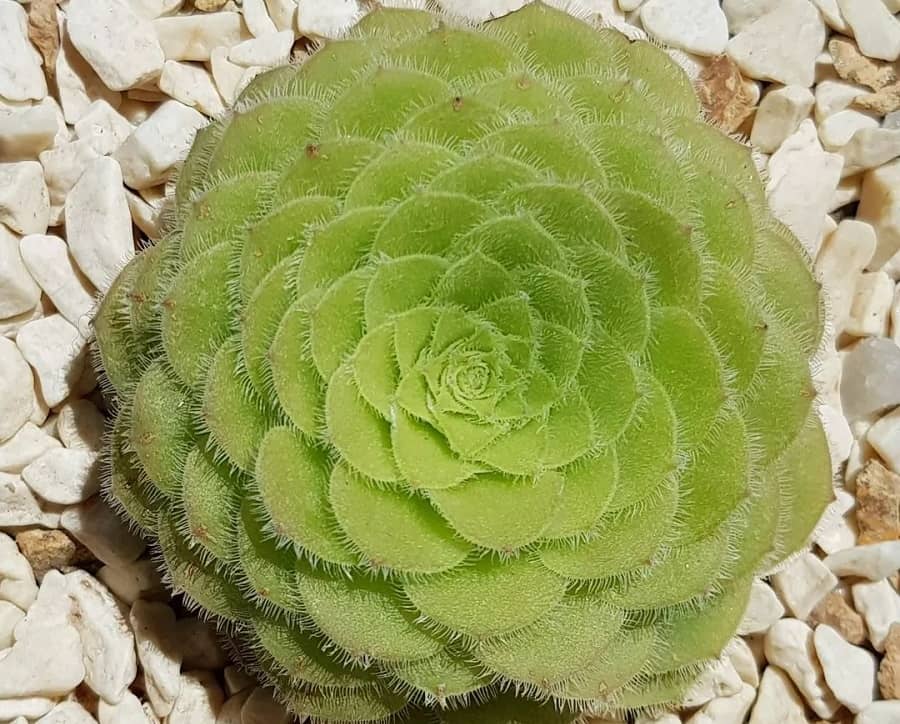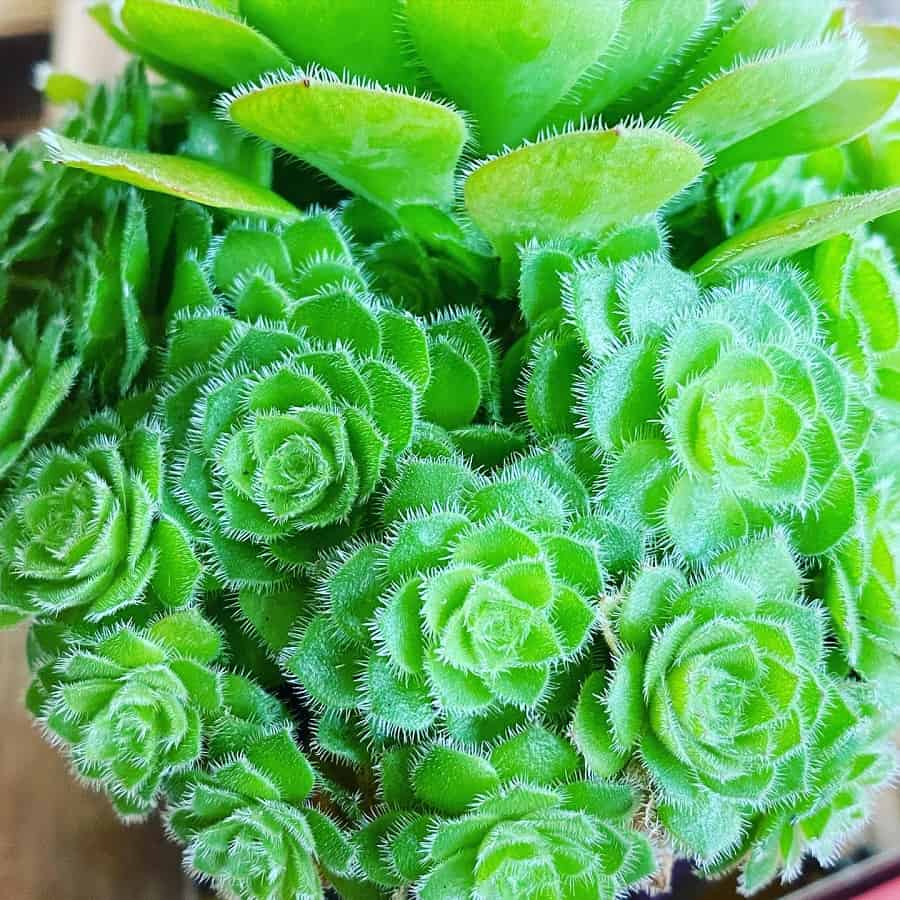Aeonium tabuliforme: Characteristics and Care
Imagine a succulent so easy to care for, it practically takes care of itself. Introducing Aeonium tabuliforme, the dinner plate aeonium – a low-maintenance beauty that will steal your heart with its striking appearance and effortless growth.
This eye-catching succulent forms a flat, rosette-shaped cluster of thick, green leaves that can grow up to 18 inches across. But the real showstopper? The vibrant yellow, star-shaped flowers that bloom atop tall stems in the spring, transforming this unassuming plant into a true botanical wonder.

Related Post:
58 Aeonium Varieties With Pictures
Contents
Aeonium tabuliforme Care Requirements
Light Requirements
Aeonium tabuliforme thrives in bright, direct sunlight. Place it near a sunny south-facing window, or use grow lights if natural light is limited. Too little light can cause the leaves to stretch and become deformed, so don’t be shy about giving this succulent all the rays it craves.
Watering Needs
Like most succulents, Aeonium tabuliforme prefers its soil to dry out slightly between waterings. Water thoroughly, allowing excess moisture to drain away, and then wait until the top 1-2 inches of soil are dry before watering again. During the winter months (October to February), cut back on watering to prevent rot.

Soil and Potting
Aeonium tabuliforme loves a well-draining potting mix designed specifically for succulents and cacti. A blend of 60% succulent soil and 40% mineral components like perlite, gravel, or lava rock will ensure proper drainage and airflow, preventing waterlogged roots.
Temperature and Humidity
This hardy succulent thrives in warm temperatures between 65-75°F (18-24°C) during the growing season and cooler temps around 55°F (12°C) in winter. Avoid exposing it to temperatures below 50°F (10°C). As for humidity, Aeonium tabuliforme prefers dry conditions typical of most indoor environments.
Fertilizer
During the spring and summer growing season, feed your Aeonium tabuliforme with a diluted succulent fertilizer every 4 weeks. No need to fertilize during its winter rest period.
Aeonium tabuliforme Propagation Guide

Ready to multiply your Aeonium tabuliforme collection? Here’s how:
Stem Cuttings
- In early spring, use clean shears to snip off 3-4 inch stem cuttings.
- Allow the cuttings to dry for 2-3 days to form a callus.
- Plant the cuttings in a well-draining succulent/cactus potting mix.
- Keep the soil lightly moist and provide bright, indirect light until roots form (3-4 weeks).
- Once rooted, treat the new plants like mature specimens.
Leaf Propagation
- Gently twist off a healthy leaf from the main rosette.
- Allow the leaf to dry for a day or two.
- Lay the leaf on a succulent/cactus potting mix and lightly cover the base with soil.
- Keep the soil moist and provide bright, indirect light.
- In a few weeks, roots and a new plant will emerge from the leaf.
With its captivating appearance, effortless care requirements, and foolproof propagation methods, Aeonium tabuliforme is the perfect succulent for beginners and seasoned plant lovers alike. So, what are you waiting for? Add this low-maintenance beauty to your collection today!
